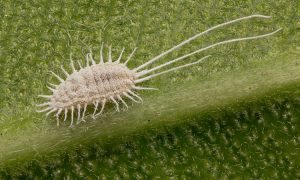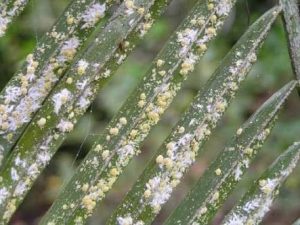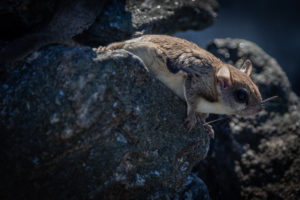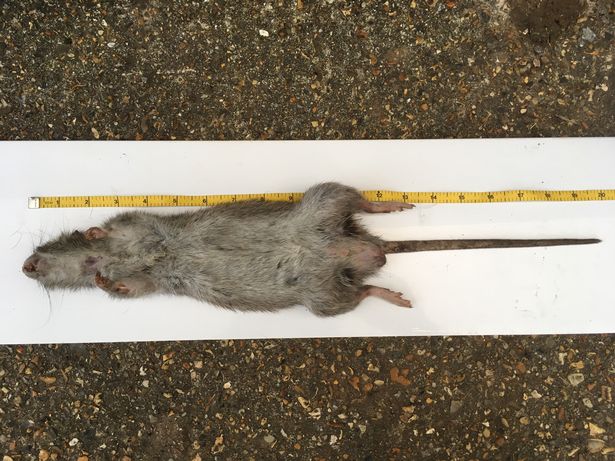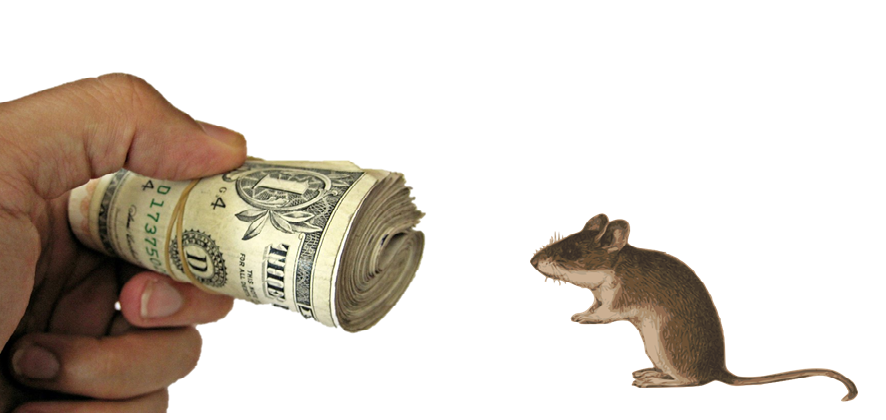
Pests can be very destructive to both the aesthetic elements and the structural integrity of collections, historic buildings, and objects.
As human habitation and agricultural activities have increased, many pests have adapted to and found niches in our buildings and our undertakings. These pests have moved around the world and proliferated through trade and travel. Microorganisms, insects, and rodents represent the majority of pests affecting cultural heritage.
Rodents, in order to keep their continuously growing teeth in good condition, gnaw regularly. This leads to direct damage to any materials gnawed and could lead to valuable furniture, objects or materials being damaged. They also readily gnaw on electric cables leading to costly repairs or even the possibility of fires. They also chew up the paper, soft fabrics and insulation materials to make nests. Their urine can also damage and stain surfaces. Dead rodents, sloughed hair, and faecal matter attract and support keratin- and protein-eating insects, which then can spread into collections. A number of human diseases are transmitted from rodent waste. Moreover, poisonous baits deployed to control infestations and dead rodent carcasses provide a food source for a range of insect pests, including clothes moths, carpet beetles, blowflies and hide & leather beetles.
Several species of birds, on the other hand, roost or build nests on buildings. Their nests and faeces deface the supporting structure. Their nests also harbour parasites. Exposure to avian source dusts (created from faeces, feathers, and nesting materials) may enhance the development of bacterial and viral zoonoses as well as cause chronic allergic responses. These reasons, along with disturbing patrons by defecating in public spaces, are incentives for suppressing birds, most often pigeon flocks. Accumulations of bird guano (e.g. in attic roosts) can pose microbial human health hazards if this dust is inhaled.
Insect pests are responsible for substantial damage to museum objects, historic books and in buildings like palaces or historic houses. For insects, often the first evidence of their presence is the resultant damage, cast skins, or fecal spots rather than the pest itself. Insect pests that cause the most damage to museum collections can be arranged into the following groups based on the types of food sources they seek:
- Textile or Fabrics Pests
- Wood Pests
- Stored Product Pests
- Paper Pests
- General Pests
Insects infest not all collections of objects in equal ways. Mostly natural history collections with large numbers of dried insects, usually stored in drawers, the dry plant material in herbaria, stuffed animals, fur and skeleton specimens are at a very high risk of infestation and damage. Large numbers of objects of these vulnerable materials (very attractive as food for some insects) are stored close to each other and in dark areas (stores). This helps the spread of an infestation from one drawer or closet to the other.
The second high-risk collections are ethnographic objects, which have similar materials as the natural history museums. In addition, large amounts of fur, feather, leather, plant materials or wood are stored together. Many of these objects like pumpkin vessels or textiles are stained (with food, body oil, sweat or urine), which is part of their use and cultural history and make them even more attractive for the insects feeding on them.
Historic buildings like castles, palaces, or old museum buildings usually have resident populations of insect pests found in shafts, unused chimneys, under wooden floors or behind wooden walls. Finding and getting rid of these pest populations is often very difficult and costly.
How insects, pests wipe off Ajanta cave paintings

A classic masterpiece of Buddhist art, the Ajanta caves, is a UNESCO world heritage site and a protected monument of the Archaeological Survey of India. But the cave paintings have started deteriorating in the past few decades and are losing the battle against insects and other climatic stressors.
The team writes that the most common insects were silverfish, beetles and common bugs. Another main problem was the entry of rainwater and water from the Waghura River. This leads to dampness in the cave atmosphere causing an increase in algae, fungi, insects, and microbes. All these together were changing the original colour of the paintings — white is turning to yellow and blue is becoming green.
Insects’ excreta damage Taj Mahal, leaves marble with green, black stains
By Simran Kashyap | Updated: Friday, July 26, 2019
New Delhi, July 25: The Taj Mahal, a grand marble mausoleum completed in 1653, is under threat from a tiny mosquito-like insect.
The marble walls of one of the world’s majestic monuments, Taj Mahal, have started to turn green and black, reportedly due to insect attack.

The sudden increase of Chironomus calligraphus is due to the stagnation and pollution of the Yamuna, a major river that flows near the monument in Agra.
The unregulated dumping of solid and liquid municipal waste into the river has led to a surge in algal growth and phosphorus, the primary food for these insects.
An Archaeological Survey of India (ASI) official said that it has become a persistent issue since the bacteria from the filth floating in Yamuna nearby provides a healthy breeding ground for insects. Black and green patches have started to appear on the white walls and these patches are actually the excreta of the insects. This can potentially damage the marble surface and the designs on it.
Beak hour traffic destroying heritage buildings
September 2013, The Sydney morning Herald, Australia
RESIDENTS have tried everything to get rid of them: flashing lights, rubber snakes, spikes on sills, mirrors on windows, chilli oil on woodwork, even lying in wait with hoses or water pistols. But the sulphur-crested cockatoos of Potts Point, which have caused more than $40,000 in damage to one building alone, are absolutely incorrigible, say infuriated residents, whose plan for a cull is stuck in bureaucratic limbo.
Many of the homes affected are in heritage-listed, art-deco buildings, with wooden window frames eaten through by the birds. At Kingsclere, a 1912 building on Macleay Street, cockatoos have destroyed slate roof tiles, causing them to drop seven storeys to the street.
We need an effective solution to this problem. Combirepel™ a non-toxic, non-carcinogenic, non-hazardous and environment-friendly insect and rodent repellent is definitely an effective and long-lasting solution to control the pest menace in museums.
Combirepel™ is available in the form of solid masterbatches, liquid form, wood polish additive and lacquer. The product does not kill the target species; it just repels them. It follows 6-tiered mechanism, which is extremely effective on insects like termites, ants, beetles, etc. It is RoHS, RoHS2, RoHS3, REACH compliant and FIFRA exempted. Combirepel™ liquid concentrate and the lacquer can be coated on the walls, furniture and other surfaces which require protection from the pests.
CombirepelTM Bird repellent gel lacquer and spray can be used to protect the surfaces from the damages caused by bird droppings.
This product is specially designed to prevent birds perching and roosting.
The product causes the bird’s pain receptors
associated with taste. Some birds use their sense of smell through which they
recognize that the product is a threat. The product is specially designed to prevent perching and roosting
of birds. Repellent evokes a physiological effect which the birds associated
with sensory cue and then learn to avoid it.
Contact us at technical.marketing@ctechcorporation.com to keep the pests away.
Also, visit our websites:
1] http://www.ctechcorporation.com/
2] http://www.rodrepel.com/
3] http://www.termirepel.com/
4] http://www.combirepel.com/
Follow our Facebook pages at:
1] https://www.facebook.com/Combirepel-411710912249274/
2] https://www.facebook.com/Termirepel-104225413091251/
3] https://www.facebook.com/Rodrepel-120734974768048/
Follow us on our Twitter pages at:
1] https://twitter.com/rodrepel
2] https://twitter.com/termirepel
3] https://twitter.com/combirepel


